What Biologists do all Day - Structural Biology
Do you ever wonder what biologists actually do all day long? Do they sit (stand?) there and brew evil potions with yeast and E. coli while breeding the next killer virus? Torture mice? Lovingly talk to flowers?
First of all, there are many kinds of biologists and many jobs they can have, so it's impossible to make a general statement. But after sitting in front of a computer the whole day, I thought I'd show you one aspect of what the life of a biologist can look like.
And it's the life of a structural biologist.
Don't get me wrong, it's not my profession, just something I have to study for my degree. And it's not something I particularly enjoy, but here we go!
When you're told about the structure of a protein, they'll usually show you something like this:
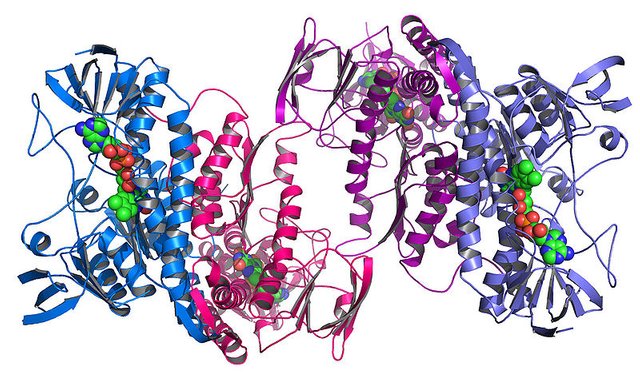
But how do we create such a structure? Because we can't just look through a microscope and see it. And it's not something a computer can just do by itself. It's the end result of a long and tedious process.
First, you need a protein. But not just a single molecule, a lot of it! Correctly folded and as free of contaminants as possible. That alone is already a piece of work. And then, you need to create a protein crystal.
For that, you need the exact right conditions (salt concentration, correct detergent, correct temperature, some luck). Because even if a crystal forms, it might not be one you can use.
This one might look cool, but it's completely useless.
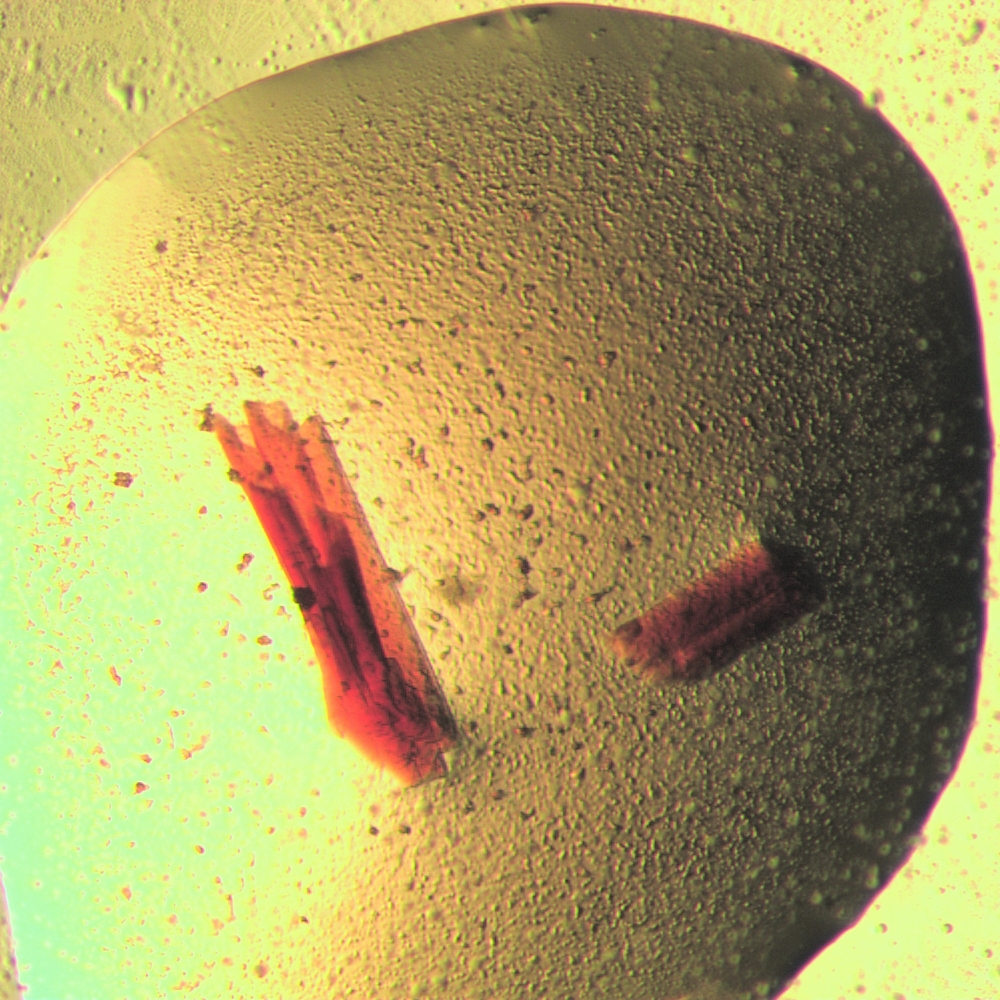
This would be a crystal that could be used:
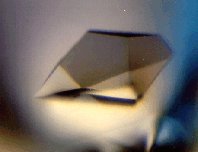
Then, the crystal is put on a tiny metal stick and shot with x-rays, which creates a so-called diffraction pattern that looks like this:
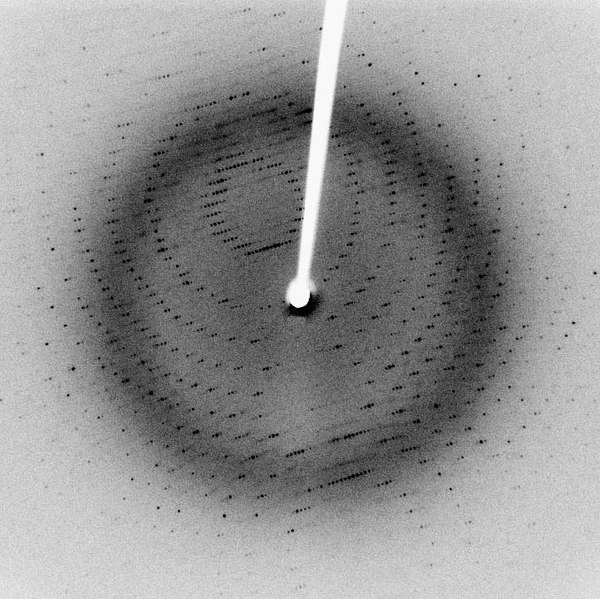
How this happens exactly and how we proceed from this is complicated and it would go too far to explain it in a short post meant to give you some basic insights. Let's just say it involves a lot of dark magic math and physics (I'm sure you'll find plenty to read about it if you google a bit, in case you're really interested. I'm also willing to answer some basic questions in the comments).
But in the end, you get a picture that gives you the "electron density" at certain points in the molecule. From there, you can create the actual structure, bit by bit. It's work, it can go terribly wrong and it's not something I'd enjoy doing for the rest of my life. I'm impressed by the patience of everyone who chooses to go in this field and stays.
An example of an "electron cloud" with the correct amino acids (the building blocks of proteins) would look like this:
Let's have a closer look at that!
Looks neat, doesn't it? But this is a best-case scenario. Not only do you need to add these lines yourself and basically guess which amino acid it might be (there are several that look the same if presented by the electron clouds)
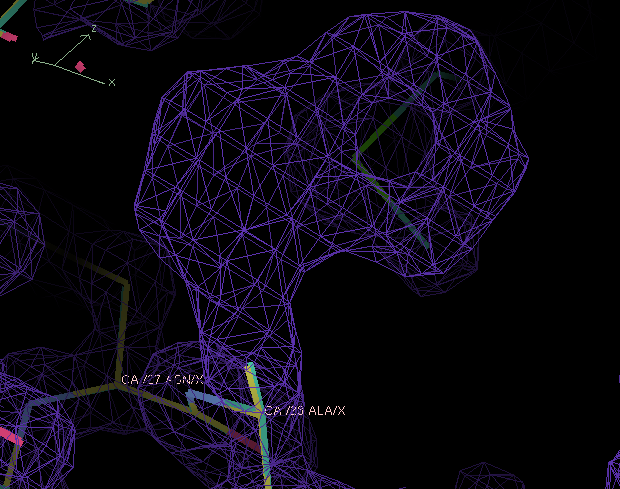
No, the resolution of the electron clouds can also turn out very, very bad, if the conditions were wrong, your crystal was bad, the x-ray machine sucked or something else just messed up your experiment.
And why all that? Why would anyone go through all that trouble just to find out the structur of some dumb protein?
The structure of a protein can tell us a lot of how that protein functions (or why it might not function sometimes). This allows us to create similarly working proteins, create models of how cellular processes work, and much more. We need the structures, and we need the people who research them.
But geez, am I glad I don't have to do this all the time.
Sources: The lectures on structural biology I attend

Fun Fact: The X-Ray diffraction of DNA done by Rosalind Franklin was a large part of how Watson and Crick were able to deduce the double helix structure of DNA. Her boss let Watson and Crick into her lab when she wasn't there to look at her pictures.
I know! Such an asshole!
How do you get involved with steemstem?
Just join steemit.chat and then the steemSTEM channel :)
Biologists use Heisenberg's uncertainty principle to reveal the structure of the protein. I thought they used some Hi-Res camera or something. :P wow.
It's much worse
https://steemit.com/steemstem/@wilians/fourier-series-and-transforms-applications-part-2
Well, I'm not an impatient person, but sometimes I can't just be relaxed or composed to do some certain monotonous things. But this is far from that as the results are never guaranteed. That makes each new process an adventure, and I do love one.
Even worse, our professor showed us a publication where they had to say that their structure was wrong - and several others had used their findings and lost their funding because they weren't able to produce results.
Ouch! That has got to sting.
Don't the publications undergo peer review? That is frustrating and time-wasting venture for those that lost their funding as a result of the publication.
Well, peer-review doesn't necessarily spot everything. Their R values were actually pretty good, it was really bad luck.
Ok. That was an unfortunate turn of event.
Peer review just means they make sure everything checks out at a somewhat superficial level. That is why Reproducibility is the gold standard of evidence.
I am loving your articles. This is seriously quality work. I am a computational biology research student who uses classical molecular dynamics to understand biomolecules. Redeeming this article!
I always hated structural biology when i was studying for my master's, now i feel thankful that these people exists when i need a structure so i don't have to solve it myself...
A big part of modern structural biology is computer-assisted folding prediction based on crystallography but mostly NMR data (and some black magic for sure). Maybe you've heard of www.fold.it, this is a collaborative project that crowd-sources possible protein structures proposed by users as part of a puzzle game. I don't know how useful these data are currently to solve real structures but i like the idea :)
I always wondered how the animations behind these proteins were made but i never really understood how it was done until now. This is really good work and extremely pleasing to the eye although i may not really know how to interrupt it, but really good post too with alot of humour.
I enjoyed reading your post, but I feel you failed to mention one activity that fills the days of most biologists, drink coffee to stay awake!! :)
True, true. A lab without a coffee machine is a dysfunctional lab.
I'm no expert in this field, but I think a lot of the crystallography calculations are done on computers now. The main challenge for biologists now is to create good crystals, but they don't need to be expert bioinformaticians to solve a structure.
Heh. The computer does certain things, yes, but it doesn't solve the structure by itself. It's still hours upon hours analyzing and adjusting structures. Although it's easier than it was some decades ago, it's still a pain in the ass.
Really interesting profession, good info providing the Steemit community with valuable insight
I must confess, I didn't read it all but it's so nice to know all these knew stuff.